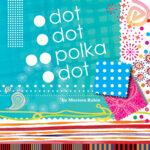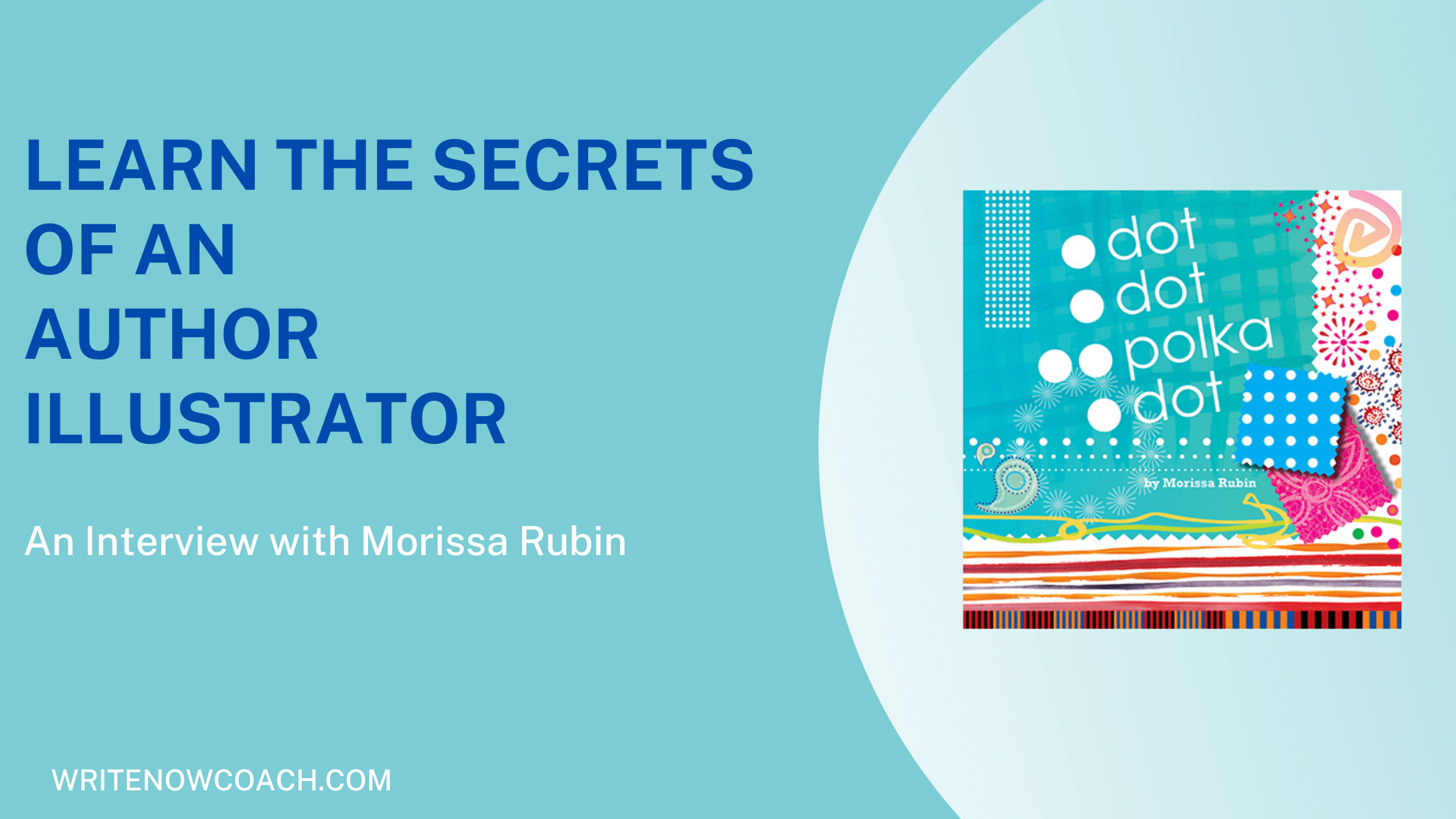Writers@Work: Learn The Secrets of an Author-Illustrator
November 29, 2022
Note From Rochelle
Dear Writers,
As we near the end of National Novel Writing Month (I can’t believe it’s almost December), I’m thinking about the New Year, new projects, and new writing tools! Stay tuned for more information.
Today I am delighted to welcome author illustrator Morissa Rubin to the blog to talk about her writing process and her brand-new book, Dot, Dot, Polka Dot!
Happy writing,
Rochelle, the Write Now! Coach
Writers@Work: Learn the Secrets of an Author-Illustrator
An Interview with Morissa Rubin
Can you tell us about your new book, Dot, Dot, Polka Dot?
 Dot, Dot, Polka Dot is a board book. It explores a world of fabric patterns: polka dots, paisleys, plaid, and stripes from cultures near and far. The different patterns all come together and create a quilt. I love mixing different media, patterns, and elements. The concept of this book allowed me to play with an assemblage of collage-like pieces.
Dot, Dot, Polka Dot is a board book. It explores a world of fabric patterns: polka dots, paisleys, plaid, and stripes from cultures near and far. The different patterns all come together and create a quilt. I love mixing different media, patterns, and elements. The concept of this book allowed me to play with an assemblage of collage-like pieces.
Can you talk about your journey to publication—have you always wanted to be a children’s book author?
As a kid I loved to draw and the making of art has played an important role throughout my life. I attended the High School of Music and Art and spent many afternoons wandering around all of the museums in NYC. I wrote and illustrated an alphabet book in high school that my mom mailed off to Random House. I attended the Rhode Island School of Design and majored in graphic design. I did my masters at a group that is no longer in existence, the Visible Language Workshop at MIT (once part of the Media Lab). These places and opportunities were all very formative for me and the kind of work I do. Throughout several decades (yes! really that long) I intermittently worked on ideas for a few different children’s books. It was not until very recently that I had enough time to work consistently to make some progress. Dot, Dot, Polka Dot evolved from an experiment. I knew I wanted to try to make a book that was visually driven. I literally was doodling with paint and had several dabs and dots of color on a page. It took a while before the idea to use textiles as a way to look at different patterns emerged. The idea of the quilt came even later.
As an author-illustrator, can you talk about your process—what comes first, words or pictures? And what have you learned about writing picture books from writing and illustrating your own?
I think being a graphic designer, someone immersed with the relationship of words and images, is central to who I am as an author-illustrator. It explains how I work and how I think about storytelling. I have started some books with words first and others with images first. Either way, early on in the process, I switch back and forth working on both words, images and how they will work together. As a long-time publication designer, I tend to think in spreads. Sequencing, pacing, phrasing, and rhythm are priorities for how I see and group ideas and how I edit my own work. I sometimes like to have pages with ideas that hang and resolve when the page turns. Other times I need pages that act like a period at the end of a sentence and provides a pause for the next moment. I like visual metaphors and try to find places where the words and images can both support each other but then I’ll also want them to diverge and work independently. It can be fun when the words and images each to have their own story to tell and impart different information. My design education instilled in me a work process that is iterative, experimental, and analytical. Paul Rand (the pre-eminent American graphic designer) both wrote one of my favorite children’s books “Sparkle and Spin” and also wrote an essay called “Design and Play Instinct.” Those two together say a lot about how I work and think about making books.
You have an award-winning career as a graphic designer and you teach as well—how do you find time to create books? Do you have any tips for our readers?
I teach a variety of graphic design classes at University of California, Davis and at Sacramento State University. These classes include typography, basic 2-dimensional design, and publication design. There is no doubt in my mind that teaching has made my book making so much better. I’m lucky in the sense that there is a cross-pollination of ideas in the different ways I spend my time. Many times in my own work, I know something is not right or as good as it could be. Having to critique student work and having to articulate to students what they should try in their work (often in an abstract and subjective realm) has helped me be more analytical in my own work. Being in critique groups can be extremely helpful in this way, especially when you have to be on both sides of the critiquing equation. In terms of finding time to work, some of my work happens in allocated blocks of time. But some of my best ideas or break throughs happen while I’m doing (or should be doing) something else. If I find myself thinking about how to move forward or work out a problem in a project I’m working on, I try to take advantage of any time that ideas are flowing naturally. It makes sense that my progress often comes in bursts. It may also explain why I am not so good at knowing where my keys or glasses are at any given moment.
What are you reading?
I almost always am reading one adult book at a time and have a pile of children’s books that I am looking at as well. I am almost finished reading the Booker Prize Winner Girl, Woman, Other by Bernardine Evaristo. My enjoyment of this book has increased as I’ve made my way through it. In no way do I mean to compare myself to Evaristo, but the book’s language and structure are both evocative and innovative, two things that I am interested in at a picture book level. I am an avid library user and the picture books that I currently have checked out include several by Beatrice Alemangna: On A Magical Do-Nothing Day, Child of Glass, What is a Child? and The Wonderful Fluffy Little Squishy. I have several out by Julie Flett including Wild Berries and Birdsong. One book by Antoinette Portis, A New Green Day and one book by Andrea D’Aquino, Everything is Mine. All, maybe not surprisingly, are by author/illustrators.
 About the author. Morissa Rubin is a graphic designer who thinks polka dots, paisleys and plaid are better together. She received her BFA from RISD and her MS from MIT’s Visible Language Workshop. Morissa lives in Sacramento where she teaches typography and other design courses at UC Davis and Sac State. Her debut board book is Dot, Dot, Polka Dot.
About the author. Morissa Rubin is a graphic designer who thinks polka dots, paisleys and plaid are better together. She received her BFA from RISD and her MS from MIT’s Visible Language Workshop. Morissa lives in Sacramento where she teaches typography and other design courses at UC Davis and Sac State. Her debut board book is Dot, Dot, Polka Dot.
To learn more about Morissa’s publication journey, check out these previous posts on the Write Now! Coach Blog.









